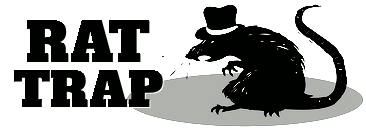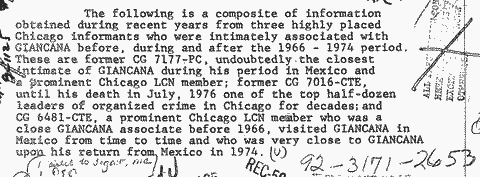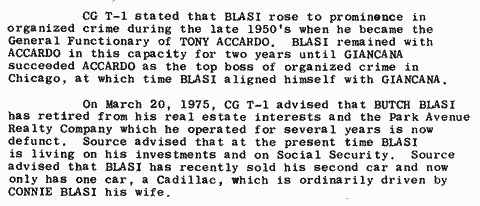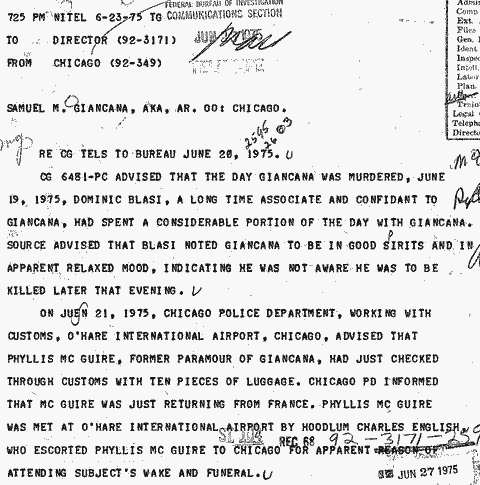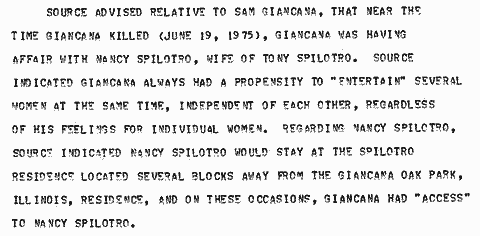Dominic "Butch" Blasi was a La Cosa Nostra member who served as the appointment secretary to three Outfit bosses in Chicago going back to the 1950s. He was with former boss Sam Giancana on the night Giancana was killed and became the prime suspect in the murder investigation. Blasi was also a secret informant for the Federal Bureau of Investigation.
Most of Blasi's informant file remains classified, and the things he told the FBI remain hidden. But I've identified some of the confidential information he shared and it's included here. These disclosures give us a small window into the Chicago underworld and help us see why Special Agent William Roemer called Blasi one of the "best" sources he had in the Outfit.
Blasi turns
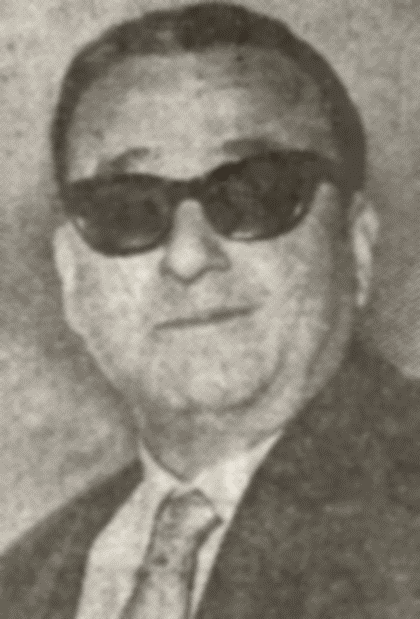
Blasi
The FBI first got its hooks into Blasi in September, 1966, when he agreed to meet federal agents at his office. [1] Giancana, recently deposed as Outfit boss, had secretly fled to Mexico. The FBI was hassling mobsters nonstop trying to determine Giancana's whereabouts. The Outfit organization was in a state of flux as members adjusted to life under new acting boss Sam Battaglia.
Blasi had been interviewed by the FBI before but he had never revealed anything. This time, however, Blasi agreed to sit down with federal agents for an interview but stipulated he would only talk about "me and me alone." He was adamant that he wouldn't discuss the activities of his criminal associates. [2] The FBI assigned Blasi the informant symbol code "CG 6481." His codename was "Romano."
What prompted his change of heart is hard to pin down, but things were different for Blasi under Battaglia. Blasi had enjoyed a certain prestige as Giancana's appointment secretary. After Giancana was run out of town, Blasi became just another Outfit member, for a time anyway, without the influence he once had. [3] It may have made him vulnerable when FBI agent Willian Roemer came calling.
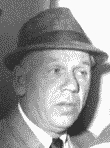
Battaglia
Blasi was the second high-level Outfit member that Roemer flipped in 1966. South Side boss Ralph Pierce also began to share confidential information after Giancana left Chicago.
Blasi eventually began to meet Roemer privately for dinner and drinks and to talk about himself. Roemer was the only federal agent he would ever talk to. To get Blasi to open up, Roemer avoided asking him direct questions about the Outfit. He knew Blasi might remain closemouthed if he felt like his answers were being "quoted" by the FBI. [4]
Instead, Roemer would finesse the conversation to "guide" Blasi to the subject matter he was interested in and then let him sound off on the subject. This indirect approach allowed Blasi to feel like he wasn't cooperating despite sitting down with the FBI.
The working relationship between Blasi and Roemer lasted over ten years until Roemer left Chicago in 1978 for another posting elsewhere. During that time, the two men became very good friends. In fact, Roemer's wife was fond of Blasi and would often join them at dinner.
Samuel Giancana
Blasi told Roemer that he first made a name for himself when he was appointed "general functionary" to Outfit boss Anthony Accardo in the 1950s. [5] When Giancana took over as boss two years later, Blasi continued in the role. He would manage Giancana's schedule and pass on messages from the boss. If a member wanted to see Giancana, he contacted Blasi first to set up an appointment. He stayed close to Giancana throughout his time as boss. Blasi was heard regularly on secret recordings made by the FBI at Giancana's headquarters in the 1960s.
After Giancana was deposed in 1966, Blasi remained loyal to him and did him favors. He told Roemer that he helped Giancana to sneak out of Chicago by secretly driving him to St. Louis to catch a flight to Mexico.
Giancana made Mexico his home base between 1966 and 1974. He paid off government officials to remain in the country and to look the other way as he built up a global gambling empire. Giancana would eventually have gambling interests in the Caribbean, Iran and Lebanon. [6]
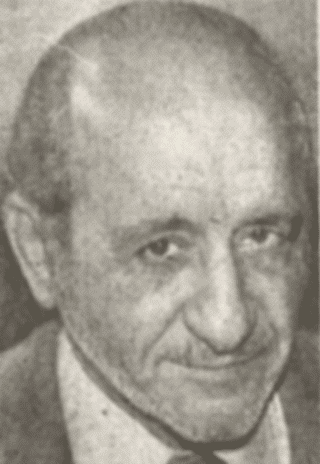
Giancana
Blasi visited Giancana in Mexico a number of times. He played a small part helping Giancana set up his new business ventures. According to Ralph Pierce, Blasi also looked after Giancana's legitimate businesses in Chicago while his former boss lived in Mexico. This suggests Giancana's relationship with Anthony Accardo and Paul Ricca remained cordial, if distant, after he was dismissed as boss. Otherwise, Blasi would have likely frozen him out. There is no evidence Blasi ever fell into disfavor with Outfit leaders for staying friendly with Giancana.
Nonetheless, things were never the same again between Giancana and Accardo. When Giancana was deported from Mexico and returned to Chicago in 1974, Blasi said Giancana's only "confidants" were himself and his childhood friend Charles English. [7]
Blasi told Roemer he was summoned to Houston, Texas, by Giancana in June, 1975. Giancana was in the hospital for emergency gallbladder surgery. He had been visiting friends in Houston when he fell ill. His gallbladder was removed by the renowned surgeon Dr. Michael DeBakey. [8] Giancana required more surgery days later after a blood clot was discovered.
Blasi said Giancana was very secretive about his health and insisted Blasi tell no one in the Outfit about his condition. Even old friend Charles English was kept in the dark. Giancana only wanted his immediate family to come to his bedside. Blasi said that Giancana's eldest daughter Antoinette was told to stay home. Giancana had fallen out with her after she divorced her husband and gave up custody of her five children. His longtime girlfriend, actress/singer Phyllis McGuire, was informed of his surgery but was told not to visit. [9] Giancana did allow his latest paramour Carolyn Morris to see him.
Giancana is killed
Days after returning to Chicago from Houston, Giancana was shot six times in the head by a .22 caliber firearm in the basement of his Oak Park home. He just celebrated a "Welcome Home" party with family members and his two closest mob associates, Charles English and Dominic Blasi. Law enforcement immediately suspected he was killed by someone who attended the party.

Chicago Tribune, June 1975.
Blasi never told Roemer much about Giancana's murder. Of course, that's understandable, as Blasi was the prime suspect. Witnesses said they saw Blasi reentering Giancana's residence (he had gone home earlier) fifteen minutes before the time of death, and the murder weapon was found ditched on the route between the murder scene and Blasi's home.
In his memoir, Roemer wrote about allegedly trying to interview Blasi about Giancana's murder. According to Roemer's published account, Blasi told him:
"Mr. Roemer, I have nothing to say to you about it. I won't insult your intelligence by telling you I wasn't there before it happened. But I won't talk to you about it. If you have a warrant or a subpoena, serve me. But if you don't, I say to you in all respect, I'm not going to discuss it with you or with anybody else." [10]
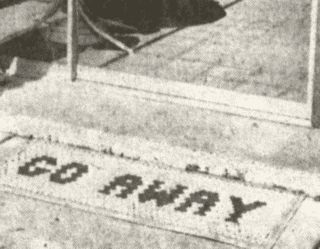
Giancana's "unwelcome" met
In reality, the day after Giancana was murdered, Blasi secretly spoke with Roemer and told him that he had spent a good part of the day with Giancana. Blasi said Giancana was in "good spirits" and a "relaxed mood". [11] He said Giancana gave no indication that he was aware he would be killed later that night.
Blasi denied killing Giancana but doesn't appear to have offered a credible alternative suspect, despite the circumstantial evidence against himself. Instead, he told Roemer that Giancana was killed by "forces outside of organized crime." [12] This seems to be a suggestion that Giancana's murder was tied up somehow in his role in the Central Intelligence Agency plot to kill Cuban leader Fidel Castro. A more likely reason was that Outfit leaders believed Giancana was going to talk about his criminal history in Senate committee hearings set to begin a few days later.
Blasi seems to have persuaded Roemer of his innocence. Roemer wrote in his memoir that he was one of the few people in law enforcement who didn't point the finger at Blasi. [13] What Roemer didn't admit (How could he?) was that Blasi was one his best sources. By this time, Blasi was a personal friend of Roemer's, and he no doubt didn't want to believe Blasi was connected with the killing. Roemer seems to have been prepared to give his friend the benefit of the doubt, short of conclusive proof otherwise.
Two years after Giancana's death, Blasi floated another reason for the former boss's murder. He told Roemer that Giancana was having an affair with the wife of Outfit member and hit man Tony Spilotro. [14] According to Blasi, Giancana enjoyed having relationships with numerous women at the same time. The Spilotro's residence was only a few blocks from Giancana's home, which gave him "access" to carry on an affair. [15]
It wasn't out of the realm of possibility that Giancana might have slept with another Outfit members's wife, because he had done it before and had gotten away with it. [16] But why didn't Blasi bother to mention it at the time of the murder to shift blame away from himself and give the FBI another credible lead to investigate?
Gus Alex
After former co-boss Paul Ricca died in 1972, the Outfit administration was reorganized. Blasi said that Gus Alex, a Greek mobster, was now part of a three-man leadership team along with Anthony Accardo and Joseph Aiuppa. Blasi explained that Accardo was the top boss and was "available only for important policy decisions." [17] Aiuppa, a Cicero-based mobster, was "responsible for the day-by-day operations." South Side boss Ralph Pierce, another Roemer source, shared similar information about the leadership structure at the same time.
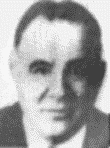
Alex
Blasi didn't define Alex's role, but he clearly saw him as a step below in power from Accardo and Aiuppa. Blasi said he wasn't "one of those individuals who had been lead to believe that Gus Alex is currently one of the top leaders of the organized crime in Chicago." [18] He said Alex couldn't be "admitted to the innermost circle of leadership" because he wasn't Italian. [19]
Blasi called Alex a "strong leader." [20] It's clear he admired Alex. He told Roemer in 1978 that there is "almost no one in [the Outfit] who rates more respect from the membership than does Alex." [21] He said Alex had been a "top man in [the Outfit] for decades, and at the present time, has more contacts in the legitimate sector than probably any other leader [in the Outfit] with the possible exception of Anthony J. Accardo." [22]
By the mid-1970s, Alex was focused on heading up the "connection guys." Blasi said Alex still operated the lucrative Apex Amusement, a company that sold cigarette machines, but he had mostly given up generating income from other kinds of rackets. Alex, according to Blasi, was no longer responsible for gambling activities in the Loop-area of Chicago like he had been in the past. His primary responsibility now was to "develop and maintain relationships with individuals who are in position to provide favorable treatment to organized crime." [23]
According to Blasi, Alex was the "most surveillance conscious and cautious member of organized crime in Chicago who ordinarily will never been seen with any other member organized crime in Chicago on a social basis." [24] For example, when the son of Outfit bigwig James "Turk" Torello got married in 1977, Blasi said Alex was one of few Outfit leaders who didn't attend. Alex was afraid the government could make a "conspiracy case" against him if he was seen in public with other mobsters, so he avoided public meetings at all cost.
Blasi said that Alex spent a "considerable time" outside of Chicago, especially in the winter months. When it was cold, he went to his condominium in Fort Lauderdale, Florida. In summer, he regularly visited his brother's farm in Michigan. [25]
Murder of Johnny Roselli
Legendary La Cosa Nostra member Johnny Roselli was murdered in 1976, a year after Giancana. He was found stuffed in a barrel floating in Dumfoundling Bay, near Miami, Florida. Roselli had ties to the Outfit and the Los Angeles Crime Family going back decades. Roselli and Giancana were old friends and both were allegedly part of a plot by the Central Intelligence Agency to kill Castro.
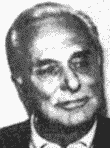
Roselli
In the mid-1960s, the FBI discovered Roselli was an Italian national living in the United States without proper documentation. For years, he claimed to have been born in the state of Massachusetts. Roselli's secret was blown when his good friend, Los Angeles Crime Family member Salvatore Piscopo, a longtime secret informant, turned him in to the FBI. The Department of Justice immediately began proceedings to deport him. There were some in the underworld who worried Roselli might sell out his criminal associates in a deal to remain in the country.
Over the next ten years until he was murdered, the FBI turned the screws on him to get him to cooperate. The FBI assigned him the informant symbol code "LA 4369" as a potential criminal informant. [26] Despite tremendous pressure, there is no evidence he ever divulged any meaningful information about his La Cosa Nostra activities or his organized crime associates.
Blasi told Roemer that he had no idea who might have killed Roselli. [27] As far as he knew there was no connection between the murders of Roselli and Giancana. Neither murder was ever officially solved.
Frank Sinatra
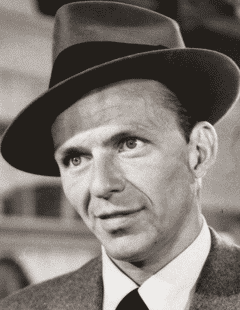
Sinatra
Blasi told the FBI about the falling out between Giancana and entertainer Frank Sinatra. The two men had been close friends for years, but things began to sour after John Kennedy became president in 1961. Sinatra was a big supporter of Kennedy and had campaigned for him.
According to Blasi, Giancana had made "certain representations to the [Mafia] Commission that Sinatra would able to have influence behind the scenes in the Kennedy administration. When Kennedy was successfully elected and when Sinatra's representations as passed on by Giancana did not materialize when the Kennedy administration, especially the Department of Justice under Robert Kennedy which intensified the investigation of organized crime, Giancana lost considerable face because of the reliance of the leadership of organized crime on Sinatra's representations and Giancana never forgave Sinatra for this situation." [28]
After that, Giancana considered Sinatra a "phoney" and eventually dropped him as a friend. According to Blasi, Sinatra reached out to Giancana just before he died and invited him and his friends to a private party at Giannotti's Restaurant, the site of Giancana's old headquarters. [29] Giancana turned him down. Blasi said no one from Outfit attended the party.
DiVarco fronts for Vince Solano
At the infamous "Last Supper" meeting attended by Outfit leaders in 1976, Blasi learned that Vince Solano had succeeded Dominic DiBella as boss of the North Side of Chicago. [36] He told Roemer that the Outfit had decided to "keep [Outfit member Joseph] DiVarco out front" to give the appearance he was boss. Solano would then have an opportunity to take over the territory without "interference" from law enforcement. In addition to taking over the North Side, Blasi said Solano would continue in his role as president of Chicago-based Local No. 1 of the Laborers International Union of North America (LIUNA).
Frank Bompensiero
The FBI questioned Blasi about the murder of Los Angeles Crime Family member Frank Bompensiero. He was killed gangland style in San Diego, California, on February 10, 1977. Bompensiero had been a secret FBI informant for over a decade. The FBI was concerned his cooperation had leaked out and he had been killed over it.
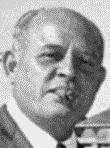
Bompensiero
Blasi said Bompensiero was a friend of his. Bompensiero had done business in Las Vegas with the Outfit in the past. Blasi said he had no idea who killed him or why. He admitted to Roemer that he wasn't in Chicago on the day of the murder. He added that Anthony Accardo, Joseph Aiuppa, John Cerone and James Torello, all prominent Outfit members, were also traveling at the time of the murder. [30]
As it turned out, the Outfit had nothing to do with his murder, but it's uncertain if Blasi would have told the FBI had he known. Based on the available FBI documents, it doesn't appear that Blasi was inclined to provide the FBI information on murders he seemed likely to know about.
He was also unhelpful into the investigation of the murder of Outfit bigwig Charles Nicoletti in 1977. Nicoletti was shot three times in the back of the head while he was sitting in his automobile. Blasi told Roemer that he didn't know why Nicoletti was killed. [31]
It's understandable that Blasi wouldn't want to discuss the Giancana murder - he was a suspect - but it seems hard to believe that someone who spent decades close to the Outfit's inner-circle wouldn't know a thing about the murders of Roselli and Nicoletti, or couldn't speculate about the killers and the motives. [32]
Fading away
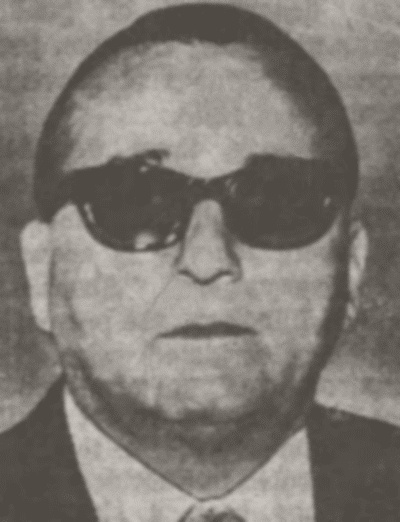
Blasi
Blasi told Roemer in 1975 that he had retired from working. [33] He had shut down his Park Avenue Realty Company and was now living off his investments and social security benefits. He had downsized by selling his second automobile and was now driving only his Cadillac. There was no indication in the available FBI documents that Blasi was still criminally active in any meaningful way. However, he did continue to consort with Outfit leaders.
Blasi wasn't designated an FBI top echelon informant until around 1975-76, ten years after he first cooperated. He appears to have been very circumspect about the kind of information he shared with the FBI. In fact, Roemer claimed in his memoir that Blasi later denied ever being an informant when another FBI agent approached him for information. [34]
A lot of what Blasi told Roemer was interesting but not especially damaging to the Outfit. His disclosures often consisted of little more than telling Roemer where he could find Giancana or other Outfit members on their vacations. [35]
As the righthand man to three Outfit bosses, Blasi would have been privy to an extraordinary amount of Outfit dirt. He would have known about mob killings, dirty deals with other crime families and organized crime history going back decades. It doesn't appear he was ever too forthcoming about those things. It sometimes felt like Blasi was playing the FBI as much as the FBI was playing him. But the availability of more declassified FBI documents in the future may change that assessment.
Dominic Blasi was diagnosed with Alzheimer's disease in the 1980s. He died in 1993.
Notes
1 FBI, Samuel Giancana, Chicago Office, Sept. 16, 1966, NARA Record No. 124-10198-10120.
2 FBI, Samuel Giancana, Chicago Office, Sept. 16, 1966, NARA Record No. 124-10198-10120.
3 Roemer, William F. Jr., Accardo: The Genuine Godfather, New York: Donald I. Fine, Inc., 1995, 354. Blasi regained some of his influence under Joseph Aiuppa in the 1970s.
4 Roemer, William F. Jr., Roemer: Man Against the Mob, New York: Donald I. Fine, Inc., 1989, 348.
5 FBI, Dominic Blasi, Chicago Office, June 13, 1975, NARA Record No. 124-10210-10241.
6 Some Outfit informants told the FBI that Giancana was setting up narcotics deals at the same time.
7 FBI, Dominic Blasi, Chicago Office, June 13, 1975, NARA Record No. 124-10210-10241.
8 FBI, Dominic Blasi, Chicago Office, June 13, 1975, NARA Record No. 124-10210-10241 DeBakey was a celebrated physician who pioneered advances in open heart surgery. Blasi said DeBakey agreed to perform Giancana's surgery because they had a mutual friend in Mexican attorney Jorge Castillo. Castillo was Giancana's legal representative in Mexico.
9 FBI, Samuel Giancana, Chicago Office, Sept. 16, 1966, NARA Record No. 124-10198-10120. Blasi told Roemer in 1966 that Giancana used to stash Phylis McGuire at Blasi's home when the two were dating in the early 1960s.
10 Roemer: Man Against the Mob, 358.
11 FBI, Samuel Giancana, Chicago Office, June 23, 1975, NARA Record No. 124-10202-10400.
12 FBI, Samuel Giancana, Chicago Office, Nov. 30, 1976, NARA Record No. 124-10205-10086. Blasi appears to be insinuating that Giancana was killed by the CIA or the Cubans to shut him up.
13 Roemer: Man Against the Mob, 356-357.
14 FBI, La Cosa Nostra (Gangland Slayings), Chicago Office, Feb. 25, 1977, NARA Record No. 124-10196-10363.
15 Nicholas Pileggi, Casino: Love and Honor in Las Vegas, New York: Simon & Schuster, 1985, 150-155.; FBI, Roskil Gangmurs, Miami Office, Feb. 27, 1979, NARA Record No. 124-10356-10302. Tony and Nancy Spilotro had a volatile relationship. They relocated to Las Vegas in 1971. Giancana returned to Chicago in 1974 after an absence of close to ten years. It leaves very little opportunity for an affair. Frank Cullotta, a close Spilotro associate who wrote a book about his experiences, made no mention of an affair or Spilotro's alleged role in Giancana's murder. An unsubstantiated rumor from another unidentified FBI informant maintained Giancana and Spilotro were having a "power struggle" for control of the Outfit at the time of his murder.
16 Giancana allegedly slept with the wife of Marshall Caifano.
17 FBI, Gus Alex, Chicago Office, Nov. 30, 1976, NARA Record No. 124-10194-10445.
18 FBI, Gus Alex, Chicago Office, June 5, 1975, NARA Record No. 124-10194-10440.
19 FBI, Gus Alex, Chicago Office, May 25, 1977, NARA Record No. 124-10194-10447.
20 FBI, Gus Alex, Chicago Office, May 25, 1977, NARA Record No. 124-10194-10447.
21 FBI, Gus Alex, Chicago Office, Jan. 19, 1978, NARA Record No. 124-10194-10449.
22 FBI, Gus Alex, Chicago Office, Jan. 19, 1978, NARA Record No. 124-10194-10449.
23 FBI, Gus Alex, Chicago Office, July 20, 1977, NARA Record No. 124-10194-10448.
24 FBI, Gus Alex, Chicago Office, July 20, 1977, NARA Record No. 124-10194-10448.
25 FBI, Gus Alex, Chicago Office, Nov. 30, 1976, NARA Record No. 124-10194-10445.
26 FBI, John Rosselli, Los Angeles Office, June 16, 1966, NARA Record No. 124-10215-10415; FBI, John Rosselli, Los Angeles Office, May 11, 1966, NARA Record No. 124-10215-10407.
27 FBI, Roskil, Chicago Office, Jan. 25, 1977, NARA Record No. 124-10356-10113.
28 FBI, Samuel Giancana, Chicago Office, Nov. 5, 1975, NARA Record No. 124-10202-10444.
29 Giannotti's was the new name for the Armory Lounge, Giancana's old headquarters in Forest Park, Ill.
30 FBI, La Cosa Nostra (Gangland Slayings), Chicago Office, Feb. 25, 1977, NARA Record No. 124-10196-10363.
31 Accardo: The Genuine Godfather, 330.
32 FBI, Roskil Gangmurs, Miami Office, Feb. 27, 1979, NARA Record No. 124-10356-10302; Outfit associate and Las Vegas resident Frank Rosenthal was able to speculate about the killers and the motives for all these murders from a thousand miles away. His FBI codename was "Achilles".
33 FBI, Dominic Blasi, Chicago Office, June 13, 1975, NARA Record No. 124-10210-10241.
34 Roemer: Man Against the Mob, 348.
35 FBI, Charles English, Chicago Office, April 17, 1975, NARA Record No. 124-10210-10246; FBI, Dominic Blasi, Chicago Office, June 13, 1975, NARA Record No. 124-10210-10241. Unbeknownst to Blasi, similar information was routinely supplied by other sources like Ralph Pierce.
36 FBI, Joseph DiVarco, Chicago Office, Sept. 17, 1976, NARA Record No. 124-10196-10355; Roemer: Man Against the Mob, 348.
